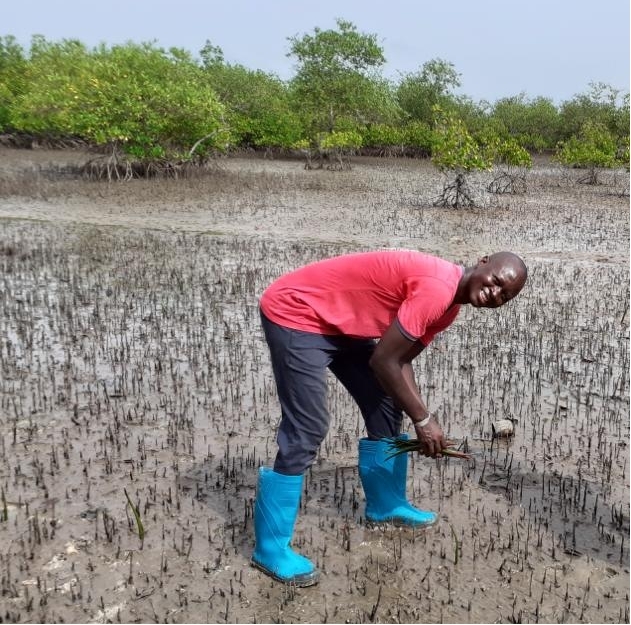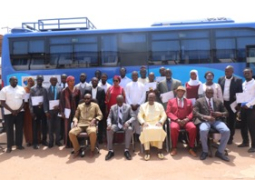
Abubacarr Kujabi was recently speaking during the integrated mangrove planting exercises at different coastline communities in West Coast and Lower River Regions.
At these events, he underscored that planting mangrove prevents flooding, storm damage and saves lives.
“Each mangrove tree also traps several inches of sediment as they also help create clean water for coral reefs and create income for fisher-folks in addition to fish production to families and communities.”
He said these incredible trees are doing us a lot of positive favors for the upkeep of the ecology and keep many of our habitats including humans healthier and safer through diverse services.
Living at the intersection of land and sea, he added that mangrove forests provide ideal habitat for fish, crustaceans and other organisms seeking food and shelter while their dense tangle of prop roots stabilise coastlines and are well adapted to the daily rise and fall of tides.
Furthermore, he reiterated that the exercise is a wetland conservation through eco-system based approach dubbed ‘coastline greenings’, which he added, comprises the cultivation of coconut trees and mangroves along shorelines.
He told the gathering that the project is aimed at consolidating and Support The Gambia for her Integrated Coastal Zone Management (ICZM) and the mainstreaming of climate change.
“From West Coast to Lower River Regions, thousands of acres have been planted and regenerated with mangrove with the involvement of VDCs and their local communities, women and youth groups. This vital mangrove habitation exercises help to create refuge-home for globally threatened migratory shorebirds, turtles, fish and dozens of other vulnerable species. NEA`s GCCA+ project in collaboration with stakeholders strive to establish and protect these species, their eggs and hatchlings from destruction. This is more of a reason why the GCCA+ project wants to highlight how mangroves protect our planet and how we can help them through restoration and replanting efforts.” He added.
“Mangroves are often under-appreciated, with most people not realising their true value to the overall health of our communities and our entire planet,” said Abubacarr Kujabi.
He therefore called on coastline communities to protect and preserve mangrove as they are interdependent.
During this massive planting exercise where thousands of propagules were planted, nine shoreline communities were covered including the villages of Sanyang, Faraba Bantang, Burrock, Bantangjang and Bondali Tenda in the West Coast Region.
In the Lower River Region, the villages covered were Jattaba, Kantongkunda, Manduar and Burrong.
Underscoring the importance of the tree, Kujabi pointed out that “as mangroves live where land and sea connect, one of their most important ecosystem functions is to protect and serve as a frontline defense for people and property along the coastlines.
“There are many species of mangrove, and the most famous are characterised by their tall, skinny, stilt-like roots, called prop roots. These roots grow in a “tangle” that actually helps them withstand the daily rise and fall of tides. These structures also cause sediments to settle out of the waterfalling at or near their roots. The roots build muddy bottom near the base of the trees which actually stabilises the coastline by reducing erosion from storm surges, currents, waves and tides.”
Kujabi thus thanked EU and NAUSU, NEA, Departments of Forestry and Parks & Wildlife Management, Brikama and Mansakonko Area Councils and VDCs of communities involved in the exercise for their unflinching support throughout the entire process.
The NEA implemented GCCA+ Climate Resilient Coastal and Marine Zone project for The Gambia is funded by the European Union (EU) in partnership with the Government of The Gambia. It aims at consolidating results and positive experiences of the previous GCCA project “Support to The Gambia for Integrated Coastal Zone Management (ICZM) and the mainstreaming of climate change”.
The objectives of the project are to support the implementation of recommendations set out in the ICZM Management and Strategic Plans (Jan 2016) and the National Climate Change Policy (NCCP) (April 2016) and to enhance institutional governance enabling planning and implementation of improved climate resilience, adaptation and mitigation measures in the Coastal and Marine Zones of the Gambia.





